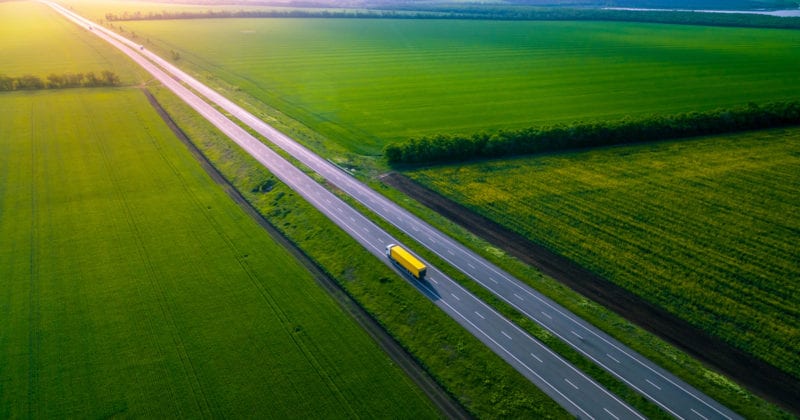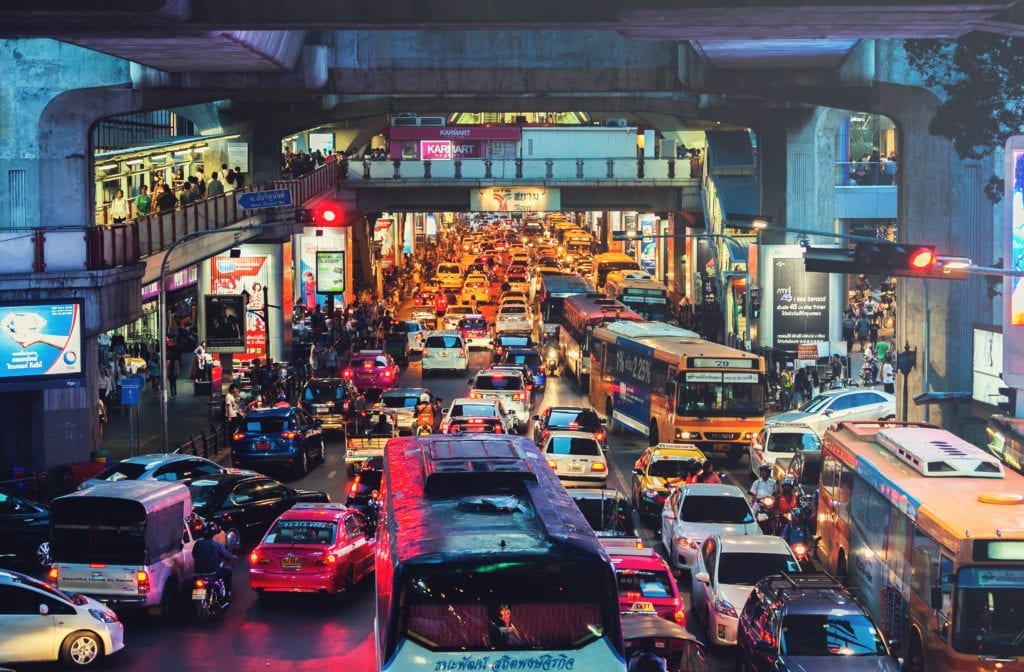
The key to green logistics could be this superfast route optimization algorithm

Poor route optimization has long been a common pain point for logistics providers trying to keep costs low and efficiency high.
If left unresolved, logistics providers face delays in deliveries, a fall in productivity and mounting losses. But why is that the case?
Once manageable with a simple Excel sheet, the tedious route planning process now needs to account for evolving traffic conditions in often-congested urban cities, on top of factoring in different delivery times. In the perfect scenario, the outcome would be well-planned driver routes minimizing mileage, fuel use and driving hours, while maximizing the productivity of the driver and utilization of the vehicle.
In reality, however, it rarely pans out without roadblocks.
Many automated route optimization tools available in the market have tried and failed to tackle this problem, but that has not deterred newcomers like Greenplan, a DHL-financed start-up, from joining the fray.
“While logistics is a highly fragmented industry with a multitude of solutions for individual processes, we have focused from the very beginning on the core of every logistics planning and transport management system: the route optimization,” said Dr. Clemens Beckmann, CEO, Greenplan.
With its smart algorithm developed in conjunction with the Research Institute for Discrete Mathematics at the University of Bonn, Greenplan ensures the delivery vehicle’s capacity is utilized efficiently and routes are calculated with the optimum delivery conditions including start time and traffic flow.
“By optimizing delivery routes and stop sequences, the algorithm significantly shortens operating times, reduces running costs and ultimately avoids every unnecessarily driven kilometer,” explained Beckmann.
The right balance
The logistics veteran is well aware of the complexities involved in route planning from his experience leading multiple innovation projects in Deutsche Post DHL Group (DPDHL Group), where he helmed various roles for over 20 years.
Now, with Greenplan, keeping up with technological developments along with rising consumer expectations is the greatest challenge for Beckmann and his team.
“The growth of e-commerce and changing consumer behavior is driving demand for scalable delivery solutions as well as the need for same-day and time-definite deliveries,” said Beckmann on responding to customers’ needs.
Greenplan built the tool precisely to cater for these increasing complexities in deliveries. It enables better prediction of estimated arrival, catering for possible time window arrangements, and allowing priority handling services for critical shipments.
Unlike other tools with map delivery routes by postal code or geo-fencing, Greenplan’s algorithm considers relevant factors, such as vehicle characteristics and payload restrictions, to optimize costs and the utilization of the vehicle fleet.
But what truly sets it apart from its competition is the way the company designed the algorithm according to the true traffic flow. It calculates the routes using daytime-dependent, road-specific travel times that reflect the actual situation that drivers face on the road, even in crowded cities.
“If drivers consider the planned tours and stop sequences as unrealistic or impractical and reject them, the new route planning system won’t be successful,” explained Beckmann on the importance of user acceptance.
This method of calculation generates up to 20 percent in cost savings compared to standard route optimization solutions, simply by reducing kilometers driven and thus lowering the carbon footprint.
Greenplan goes "live"
Greenplan goes "live"
The DHL-financed start-up has performed several benchmarks within different industries such as road freight, and grocery and home delivery, and has come out on top against existing solutions.
By September, Greenplan will launch its solution for a subsidiary of a global road freight provider that is planning a major overhaul of their existing route planning infrastructure.
The solution provides a new, efficient system for automated planning of dynamic pickup and delivery tours through an easy-to-use web-based interface.
The speed at which the calculation can be done is also a game-changer. In the planning stage, integrating time-of-day-dependent velocities on every street segment caused long calculation times for the algorithm initially.
However, thanks to the rigorous approach in Greenplan’s scientific collaboration with the University of Bonn, the time taken was lowered significantly, with the algorithm using 70 percent less computing time than standard tools.
Likewise, Greenplan also offers the speed and flexibility when doing updates — a crucial feature for route optimization tools. By housing all map data in a single database, the tool is less rigid and can respond to changes efficiently unlike older systems or tools.
“Short-term changes or certain error corrections can be implemented in fast updates without long waiting times. Our software-as-a-Service (SaaS) architecture makes global deployments as easy as local implementations,” shared Beckmann.
The green responsibility
Besides offering practical features to optimize logistics operations, Greenplan also strives to fulfill its “green” responsibility of minimizing the environmental impact of delivery vehicles.
“The ever-increasing growth of e-commerce is imposing two major challenges for dense cities: pollution and traffic congestion caused by the increasing number of delivery vehicles,” said Beckmann.
For city authorities and the logistics industry, the challenge of growing traffic volumes potentially causes delivery delays, increases accident rates and worsens air quality — issues that Greenplan aims to prevent with its algorithm.
If implemented successfully, the algorithm should result in delivery vehicles traveling for shorter distances and fewer tours. This would translate into reduced carbon dioxide (CO2) emissions, in line with DPDHL Group’s commitment to zero-emissions logistics by 2050.
“We provide visibility on the estimated carbon footprint based on planned delivery routes. Our solution also considers carbon dioxide (CO2) emissions per vehicle type as well as specific parameters for electric vehicle fleets, like range limits, to plan the most efficient routes,” shared Beckmann, who believes this development should be a standard practice in driving sustainability in logistics.
Despite the challenges ahead, he is optimistic that sustainable urban logistics is attainable in the near future. “If our solution can help to achieve climate goals, it is not only an entrepreneurial challenge but it also gives me the good feeling that Greenplan will serve a greater purpose beyond logistics,” added Beckmann.
ALSO WORTH READING















 English
English